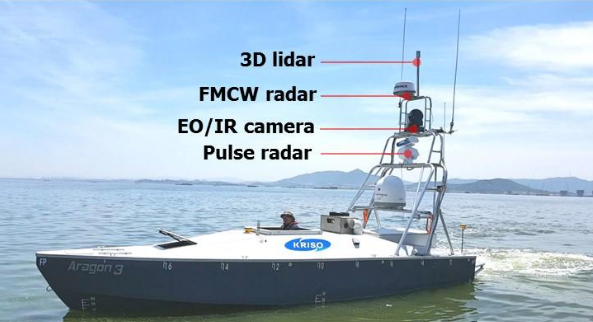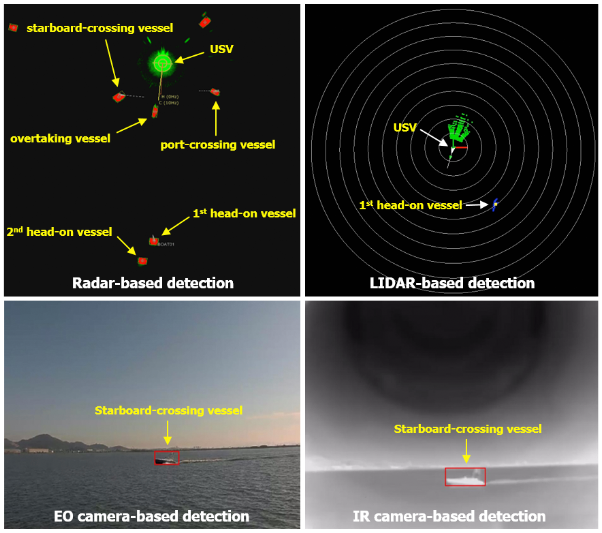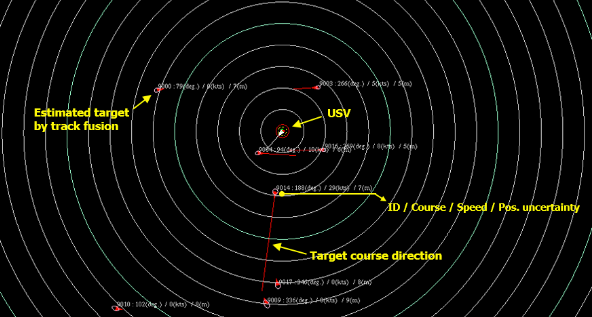With the improvement of computer performance and sensing technologies, unmanned surface vehicles (USVs) have attracted significant attention for their potential application to time-consuming and labor-intensive missions such as patrol, surveillance and reconnaissance, environmental monitoring, and inspection of marine structures. For safe USV operation, autonomous navigation technologies, including path planning, guidance and control, obstacle detection, and mapping are required. In particular, automatic detection of surrounding objects and their motion estimation are key aspects, and reliable and robust performance in a wide variety of environmental conditions are necessitated.
Marine radars are one of the most common navigation sensors used by marine vessels. Radars can provide relative bearing and range information of surrounding vessels over a wide area with a reasonable detection performance. However, the radar detection performance degrades when the sensor suffers from a blind zone at close range due to its sensing characteristics and environmental disturbances. Therefore, additional sensors are necessary to enhance the autonomous situational awareness capabilities of USV systems. Recently, optical sensors such as LIDARs and cameras have been employed for many robotics applications; they can be used to detect close range obstacles in a radar’s blind zone at a relatively high update rate. 3D LIDARs provide precise relative position information of short-range targets and cameras have a relatively high angular resolution which enables to provide precise relative bearing information of short- or mid-range targets. The integration of these sensors can lead to an ideal combination to improve the target detection performance of the conventional radar-based approach by minimizing the radar’s blind zone.
A team of student researchers at KI-R led by Prof. Jinwhan Kim has successfully developed a technology to perform multiple target detection and tracking using algorithms based on sensor fusion for autonomous maritime operation of a USV system. The research team configured a suite of detection sensors consisting of radars, LIDAR, electro-optical (EO) camera, and infrared (IR) camera, and developed automatic target detection algorithms to perceive and recognize external environmental conditions. In addition, the team proposed a multiple target tracking algorithm to achieve persistent and reliable target motion analysis of surrounding vessels. The performance and practical utility of the proposed algorithm for autonomous collision avoidance has been experimentally validated by field tests using the Aragon USV, developed by the Korea Research Institute of Ships and Ocean Engineering (KRISO).



Prof. Kim, Jinwhan Department of Mechanical Engineering, KAIST (Mobile Robotics & Intelligence Laboratory)
Homepage: http://morin.kaist.ac.kr
E-mail: jinwhan@kaist.ac.kr






